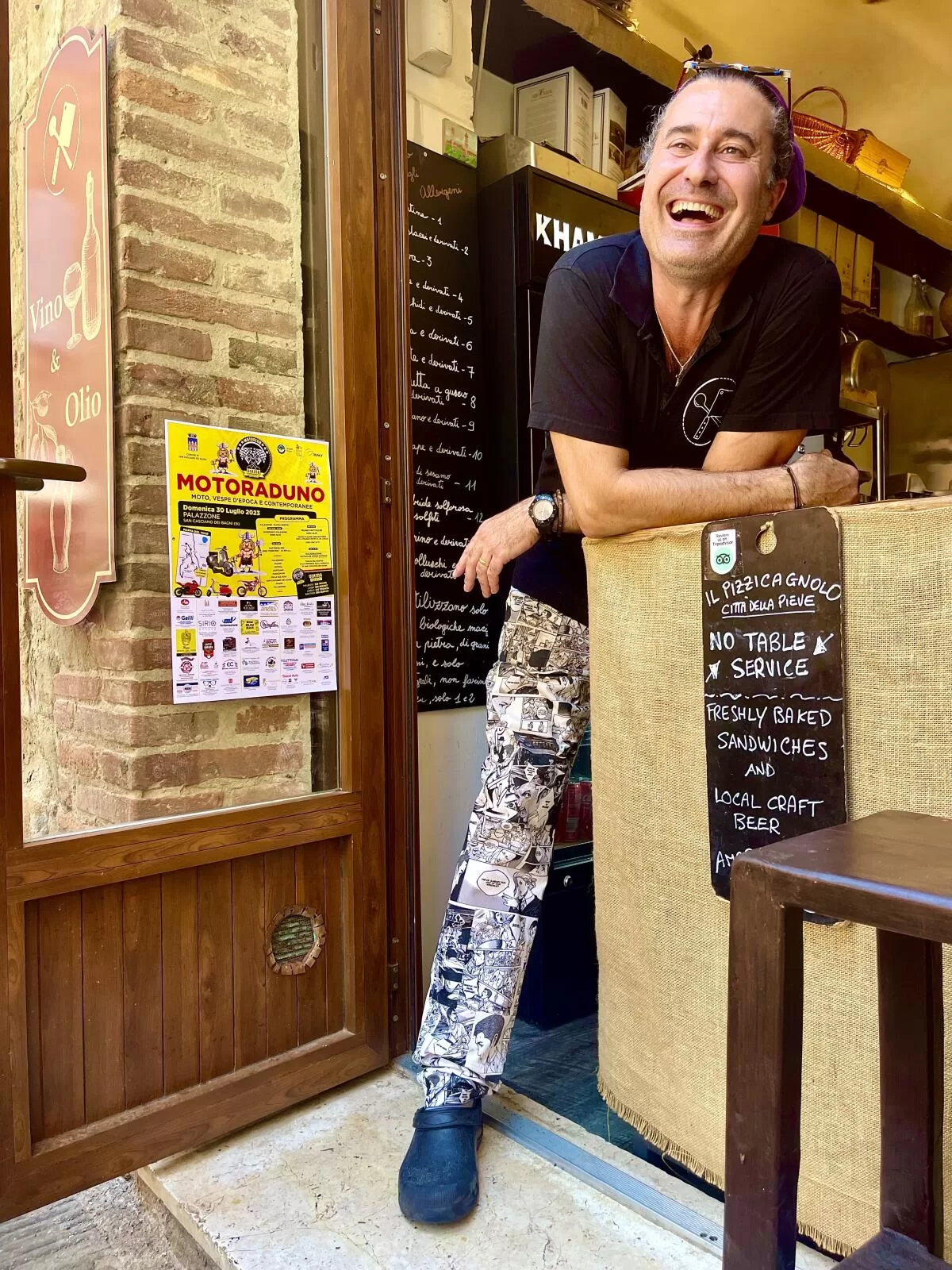Sandwich heaven in L.A. and Italy. Masa game changer. Fruit in your salsa. Wes Avila’s new-style steakhouse. Pumpkin spice latte or PSL goes indie. And robot harvesters in our farms. I’m Laurie Ochoa, general manager of L.A. Times Food, with this week’s Tasting Notes.
One-man sandwich band
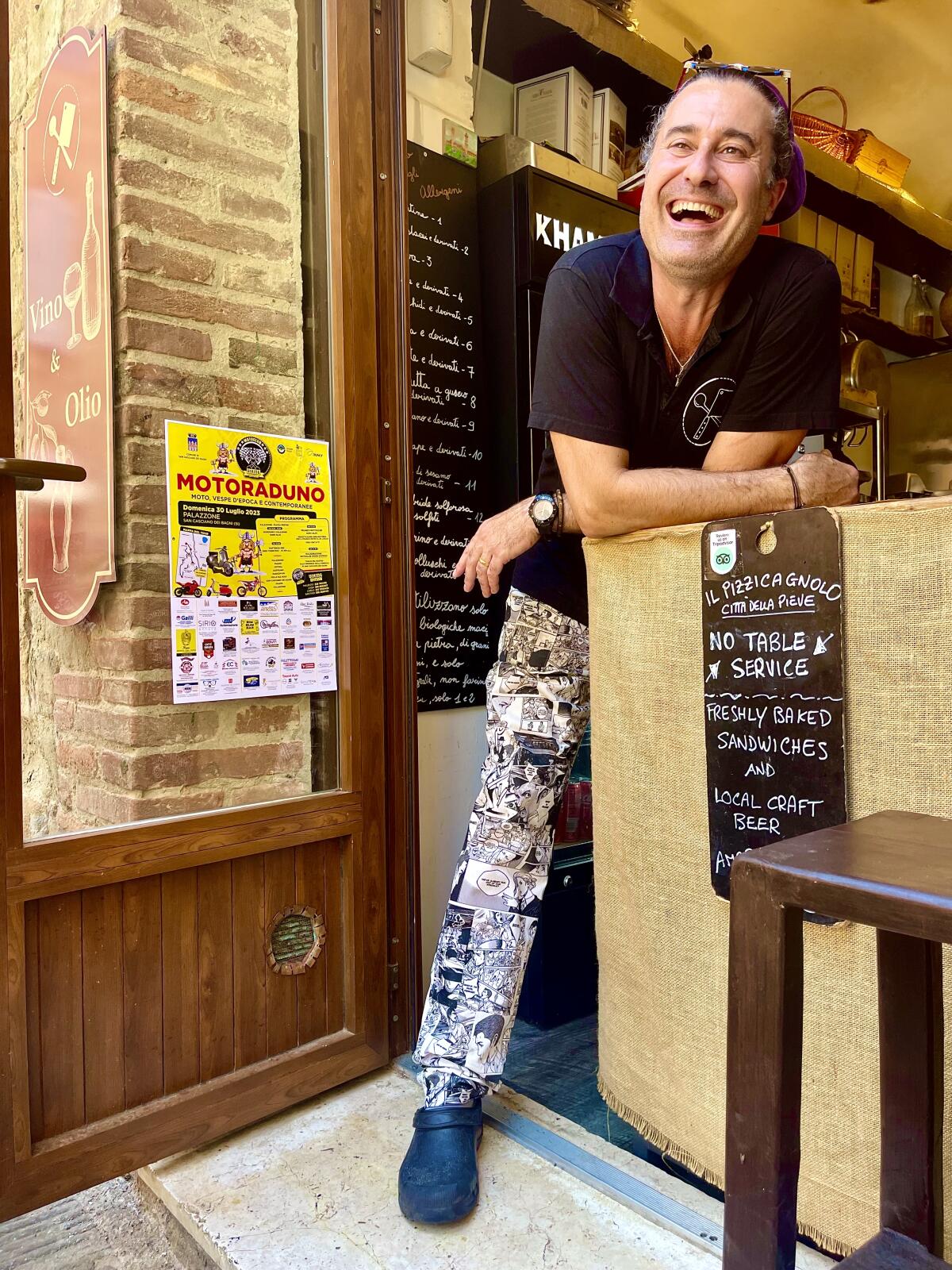
Luca Bartoccioni at his sandwich shop Il Pizzicagnolo di Bartoccioni in the Umbrian town Città della Pieve.
(Laurie Ochoa / Los Angeles Times)
Italy’s Umbria region is a part of the world where roadside porchetta trucks are almost as numerous as taco trucks in Los Angeles. These trucks have generations of tradition behind the aromatic panini their sandwich makers pass to hungry customers — a magical combination of tender, herb-seasoned pork whose juices soak into the roll plus bits of crisp, crackling skin augmented, if you know to ask, with a bit of fegato, or pork liver, for the perfect undercurrent of bitter with the luscious, almost sweet meat.
I’ve eaten incredible porchetta from trucks all over Umbria and also in the shops and intimate taverns or “fraschette” clustered in the Lazio town of Ariccia, one of Italy’s great porchetta centers outside Rome.
Yet in recent years, I’ve found myself craving the panini made by a sandwich maker in Umbria who is forging his own path. Luca Bartoccioni operates Il Pizzicagnolo di Bartoccioni from a closet-size kitchen on the Piazza Plebiscito inside the walls of Città della Pieve — birthplace of the region’s great painter Pietro Vannucci, better known as Perugino. Like so many of Italy’s panini makers, Bartoccioni has profound respect for traditional ingredients. The difference is what he does with them.
Oven-crisped sausage might come with either white or smoked scamorza and caramelized onion or tender broccoli rabe. He’s served hand-sliced carpaccio with porcini and fontina cheese made in the Alps or else with pecorino and what he calls a fennel carpaccio. Oil-preserved puntarelle, Italy’s great bitter chicory, appears on a pork hamburger with sheep’s milk cheese or else with the highly prized anchovies of Spain’s Cantabrian Sea and bits of goat cheese. And, yes, on certain days, he does serve porchetta. It often sells out.
No matter which of Bartoccioni’s sandwich combinations you order — some traditional, others his own invention — your panini always arrives on focaccia baked to order, “cotte al momento,” fresh out of the oven. This is the small miracle that Bartoccioni achieves in his tiny space.
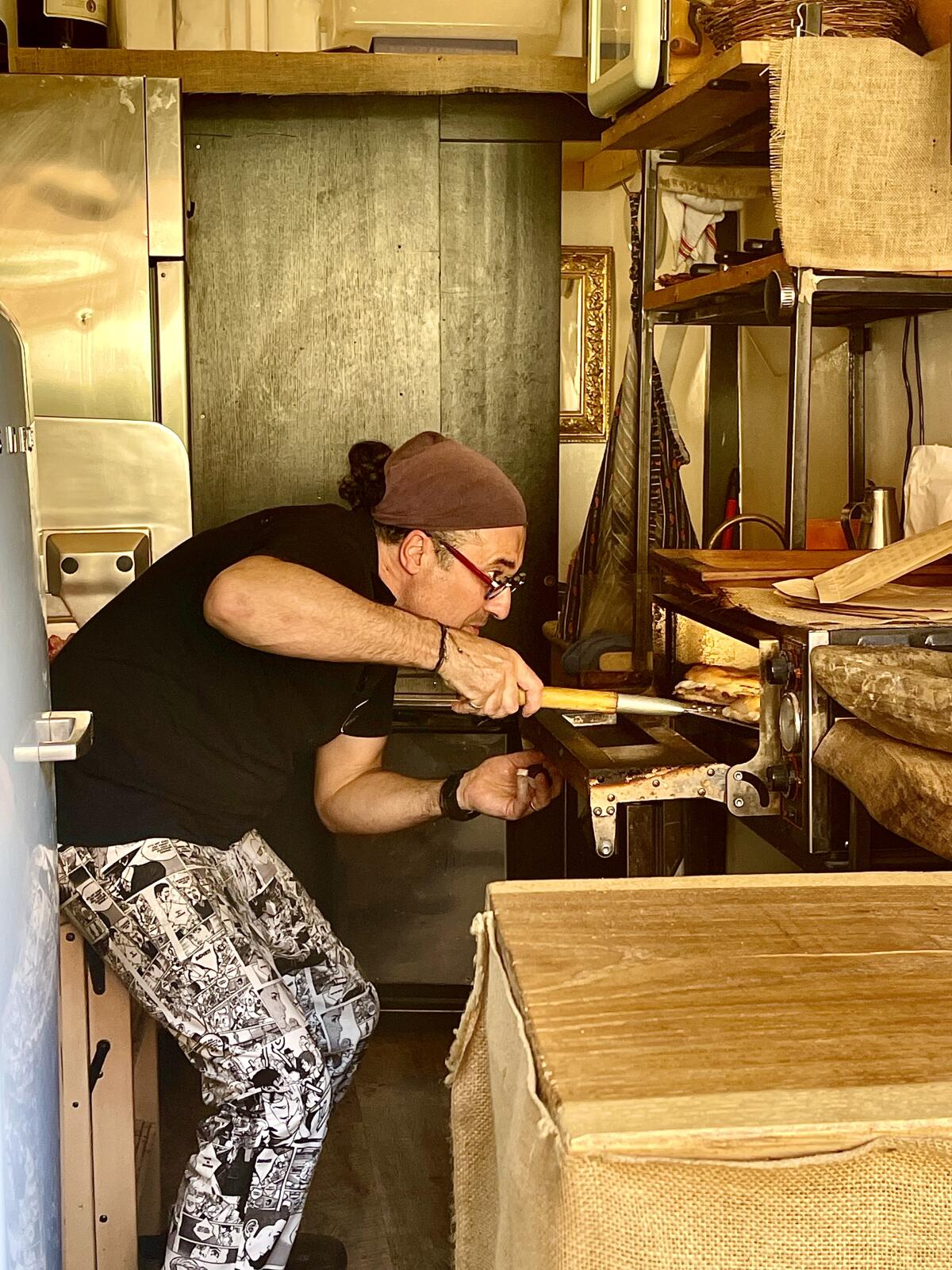
Il Pizzicagnolo’s Luca Bartoccioni takes a sandwich out of the oven in his tiny kitchen.
(Laurie Ochoa / Los Angeles Times)
When you walk up to the counter to order you see a tight-ship operation with rounds of dough awaiting their time in the oven, two beer taps ready to dispense some of the region’s best craft beer, a meat slicer, a small refrigerator, a notepad for taking orders and Bartoccioni himself moving with efficiency, calm and a ready smile. It was Nancy Silverton’s partner and former Times reporter Michael Krikorian who was the first in our group to find Bartoccioni’s sandwich spot. It’s now one of our routine stops in Città della Pieve, along with the Quintosapore farm shop with gorgeous produce harvested at the nearby farm run by twins Ale and Nic Giuggioli.
Bartoccioni and the Giuggioli brothers, who are using agroforestry and other farming innovations to grow produce adaptable to climate change while also trying to revive a nearly extinct grape variety they found on their land, represent the push-pull you see more and more in Italian culture. Striving to preserve the old while reshaping the new, even if only for the sake of a great sandwich.
37 L.A. sandwiches
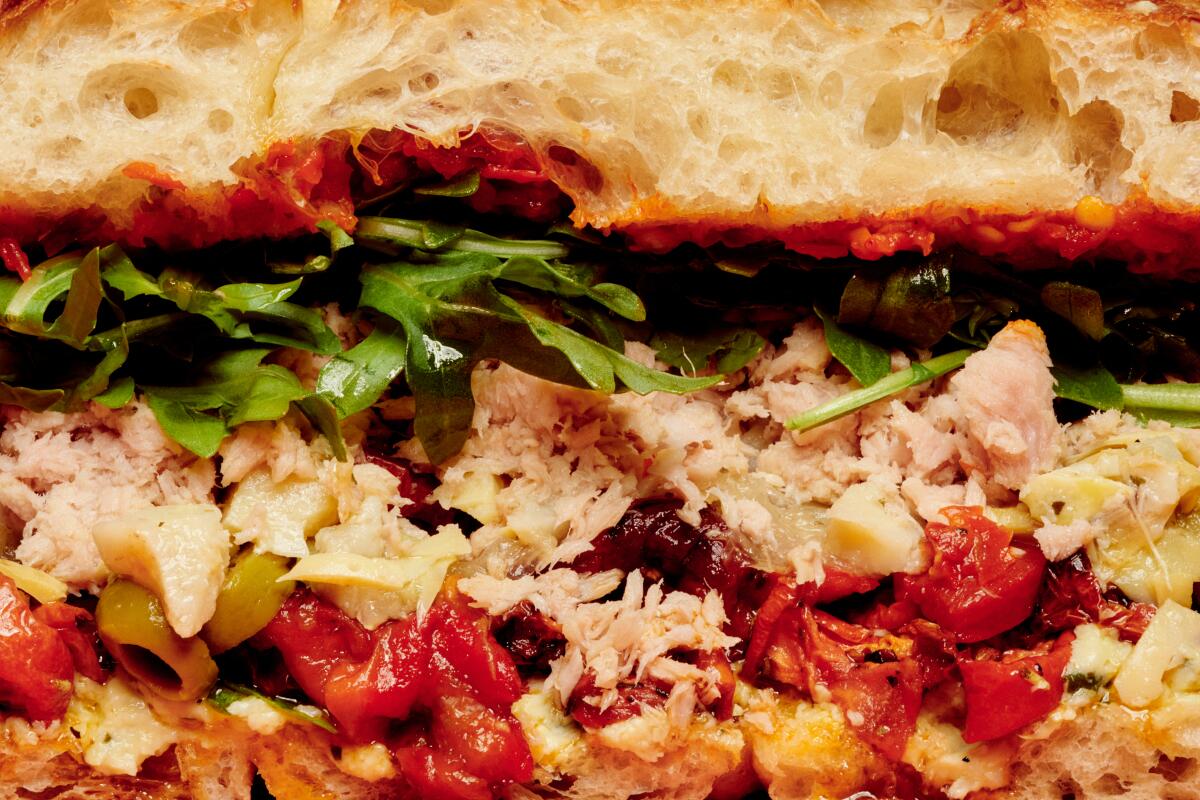
The Monaco sandwich at Mamie.
(Shelby Moore / For The Times)
In case you haven’t noticed, sandwiches are on our mind here at L.A. Times Food. For the last several weeks Food’s writers and editors have been eating around the city to come up with a guide to 37 great L.A. sandwiches. They range from Birote Deli’s shrimp ahogada and Azizam’s kuku sabzi-filled “sandevich” to the old L.A. flavor of Phillipe’s lamb and blue cheese dip.
Of course, it would be hard to do a guide to our favorite L.A. sandwiches without including Langer’s. But which sandwich to include? Food’s Stephanie Breijo chose the iconic No. 19, which she says has “the timeless allure of a stack of coleslaw, Swiss cheese, Russian dressing and some of the best pastrami in the country.” My order? The simplest: Hot pastrami on rye. Nothing else. Mustard is added at the table, but not too much because the point of this sandwich is the pastrami itself. Breijo and I met at Langer’s to talk pastrami. Neither of us was persuaded by the other’s arguments, which you can read about here. But we did find common ground — and we also had the chance to talk with owner Norm Langer, who said of the debate: He doesn’t have any favorites.

Norm Langer, second-generation owner of Langer’s Delicatessen-Restaurant in Westlake.
(Stephanie Breijo / Los Angeles Times)
Salmon smash
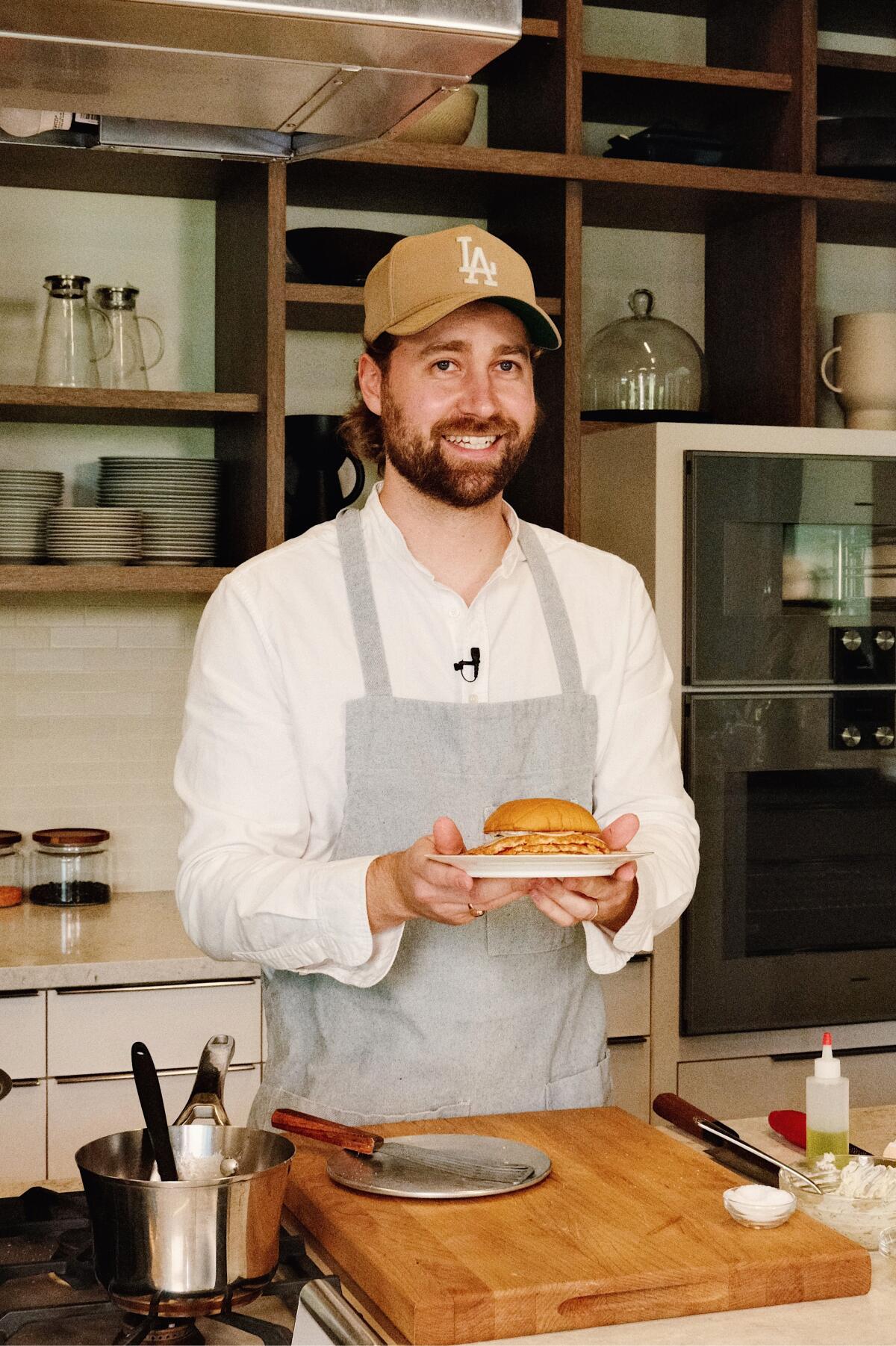
Burgette chef Sean MacDonald uses salmon belly instead of beef plus pickled cucumbers for his light, bright take on the smash burger.
(Stephanie Breijo / Los Angeles Times)
One more sandwich for you, this one in the form of a smash burger made with salmon belly instead of beef. Bar Monette and Burgette chef Sean MacDonald came to the Times Test Kitchen for our Chef That! video series to show us how it’s done. Plus, he shared the recipe.
L.A.’s newest temple of masa
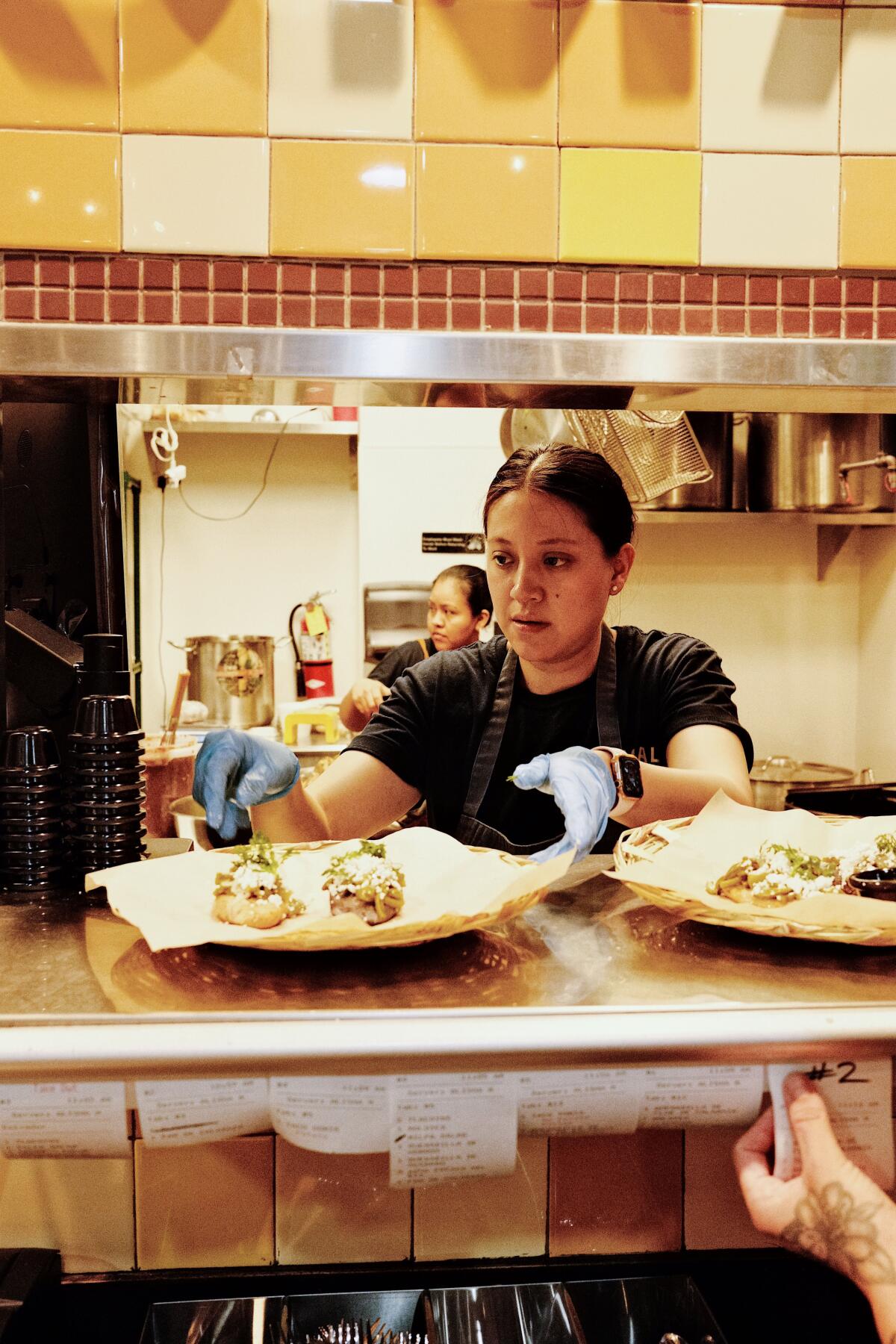
Komal co-owner Fátima Júarez works the line in the kitchen of her combination restaurant and molino.
(Stephanie Breijo / Los Angeles Times)
Breijo says that when she and deputy food editor Betty Hallock met for lunch at Komal, the newest business inside L.A.’s Mercado La Paloma, the majority of the marketplace customers were standing in line — as usual — at Gilberto Cetina’s great fish and seafood spot Holbox. But passersby kept looking at their food and asking, “Where did you get that?”
They got it from Fátima Júarez and Conrado Rivera’s artisan molina and restaurant where masa is sold, Breijo writes in her story about Komal, “by the pound or as tortillas, or in antojitos reminiscent of [Júarez’s] childhood spent in Oaxaca and upbringing in Mexico City.”
Júarez, who was encouraged to open the spot by her former boss Cetina, is, says Breijo, “part of an intimate group of tortilla makers that includes the likes of Tehachapi Heritage Grain Project and Kernel of Truth’s Ricardo Ortega and Omar Ahmed.”
“Here in Mercado, we are immigrants,” Júarez says to Breijo. “When I grind the corn in the molino the people say, ‘I remember Mexico,’ ‘I remember Guatemala.’ The people smell the corn and they remember their family, they remember their country — all of it. They always give me advice, give me support, and this project is for everyone.”
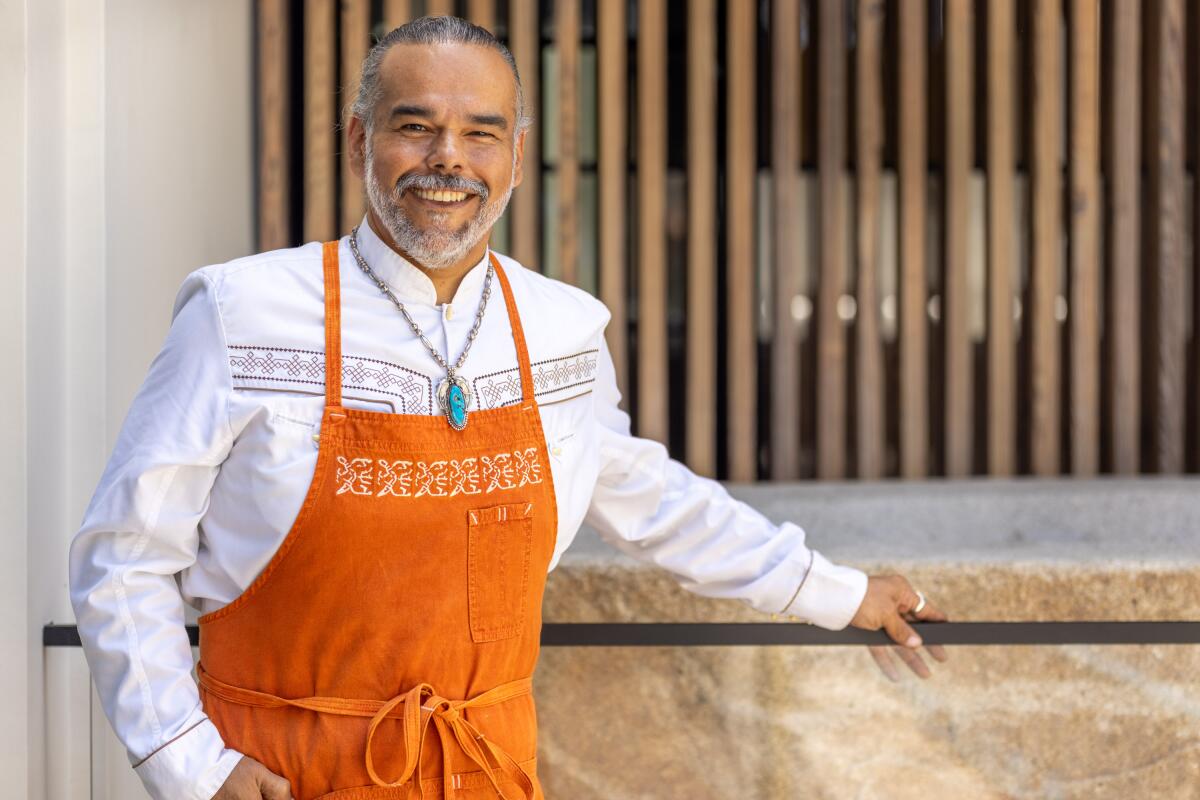
Wes Avila, chef-owner of Mexican steakhouse MXO.
(Jakob N. Layman / sbe)
Meanwhile, Wes Avila is setting out to reshape the steakhouse menu at his new MXO in Beverly Grove. As he told Breijo, that means salsa macha potatoes and sweet potato taquitos as well as “large-format Wagyu beef shank that’s braised birria-style and served bone-in … carnitas with pickled jalapeño relish; and halibut Veracruzana, with add-ons like king crab legs and jumbo shrimp.” Also in the Quick Bites column, opening notes on the new Italian-ish cafe Companion in Venice, Echo Park’s Butchr Bar, sandwich pop-up turned restaurant Carla Cafe in Beverly Grove and late-night San Gabriel yakiniku restaurant Hibiki BBQ.
Newsletter
You’re reading Tasting Notes
Our L.A. Times restaurant experts share insights and off-the-cuff takes on where they’re eating right now.
You may occasionally receive promotional content from the Los Angeles Times.
Also …

Former workers at the now-shuttered downtown L.A. restaurant Otium protested this week over unpaid wages.
(Cindy Carcamo / Los Angeles Times)
- More proof that closing a restaurant isn’t as simple as shutting the doors. Former workers at Otium, the Tim Hollingsworth-helmed restaurant that opened to great acclaim in 2015 alongside the Broad museum, protested Wednesday in front of the now-dark downtown L.A. restaurant, saying they’ve yet to receive their final paychecks. Late on Friday, word came that the workers’ checks were ready to be distributed. Food’s Cindy Carcamo talked to the workers about the stress the delay was causing as rent and house payments came due. She also got responses from Hollingsworth and restaurant owner Carl Schuster.
- Plums and berries in salsa? It’s not a new idea, but fruit in salsa is delicious and should be made more often, argues Food contributor Andrea Aliseda, who also provides recipes for ancho strawberry salsa and plum pico de gallo.
- It’s pumpkin spice season — “one of the most brilliant marketing ploys the coffee world has ever seen,” says Food’s Stephanie Breijo in her guide to 10 of the best pumpkin spice lattes and other autumn drinks. She focuses on how independent coffee spots are turning the PSL trend into something delicious — and fun.
- Yes, you can take a date out for $2 tacos and eat an affordable feast while getting to know each other. But what if you want to go all out for romance and treat your date to a lovely sit-down meal without completely blowing your budget? Food contributor Tiffany Tse found 13 romantic restaurants where two people can eat for $100 or less.
- Last week, we read about robotic tech being used to make burrito bowls and peel avocados at Chipotle — the “autocado.” This week Rebecca Plevin reports on robotic harvesters being used to pick crops in the Central Valley. “As we know it, the farmworker is no longer going to exist in another 10, 15 years,” Marco Cesar Lizarraga of La Cooperativa Campesina de California told Plevin. “It’s going to be a farmworker that’s much more savvy and much more of an operator of robotic equipment.”
Newsletter
Eat your way across L.A.
Like what you’re reading? Sign up to get it in your inbox every week.
You may occasionally receive promotional content from the Los Angeles Times.

